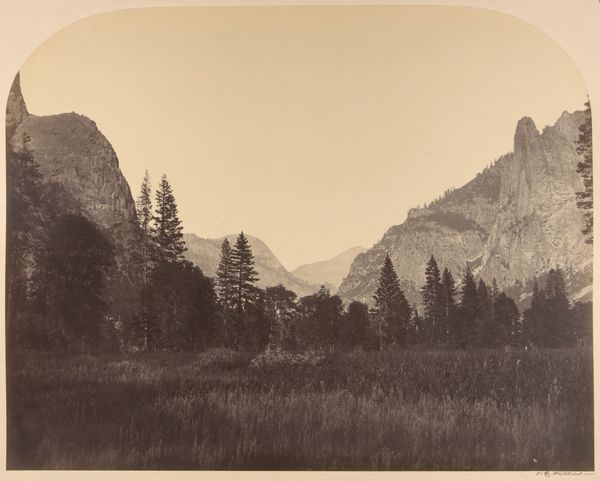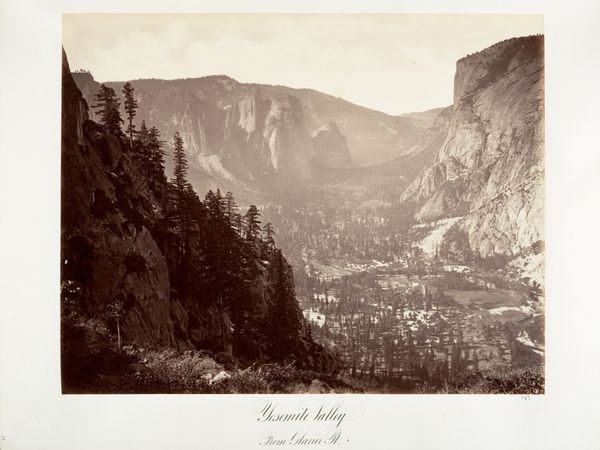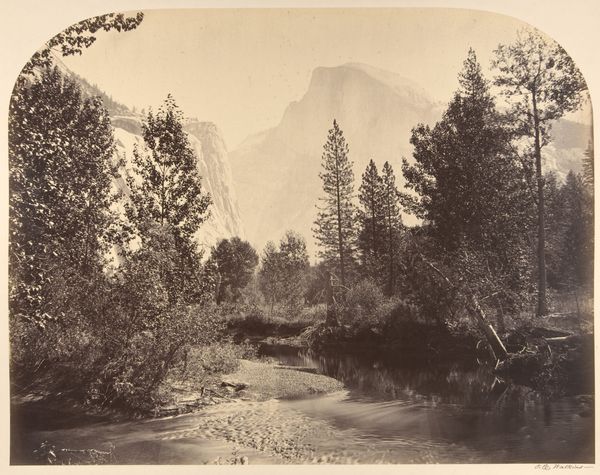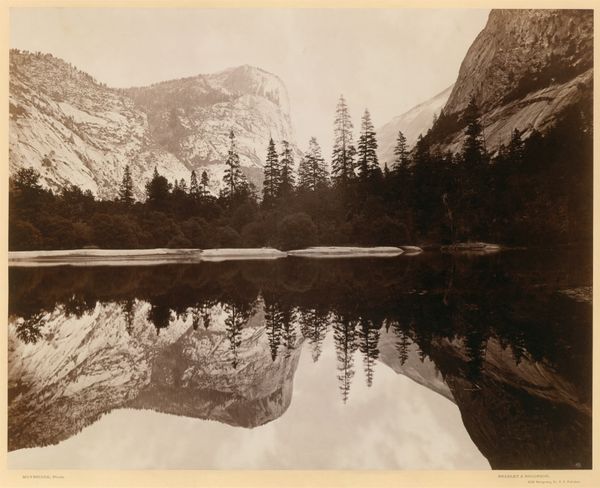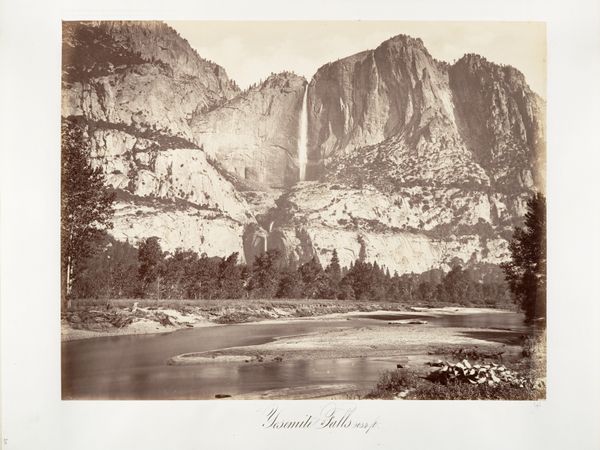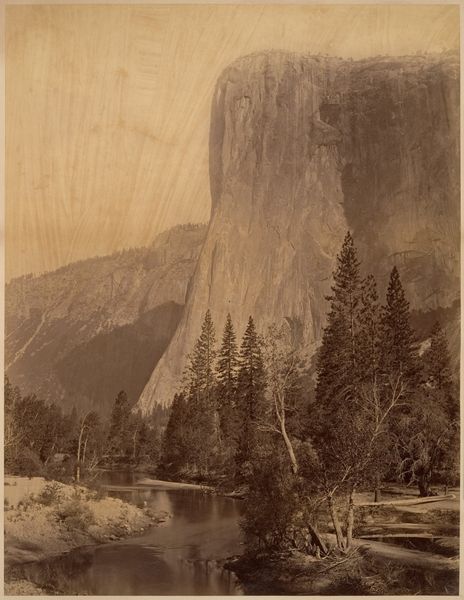
Copyright: Public Domain
Curator: This is "North Dome, 3,725 feet, Yosemite," a gelatin-silver print by Carleton Watkins, likely made between 1870 and 1874. Editor: Its immediately striking how the light plays against the immense, solid face of the rock, dwarfing the scattered logs in the foreground. There’s almost a hyper-realism in the way the light clarifies every tiny texture. Curator: Indeed. Watkins’s command of light and shadow accentuates the verticality and the scale, essential components to the visual grammar of landscape photography at the time. Consider, also, the way the single conifer in the middle grounds works like a dividing line in the scene's structure. Editor: You’re right, the formal divisions within this photo certainly provide balance. The photograph’s cultural value really strikes me as well. During a time when many Easterners and Europeans were not aware of Yosemite's remarkable landscape, Watkins’ photography, commissioned by various railroads and agencies, served to help transform Yosemite into an international destination. Curator: Note that, despite his commercial obligations, the compositions he captured frequently transcends mere documentary value. His approach is informed by the philosophies and aesthetics advanced by figures within the Hudson River School, specifically through atmospheric perspective. The atmospheric gradations certainly play an important part in emphasizing the depth and space here. Editor: To that point, I believe it important to note that this wasn't just documenting. Watkins chose to frame his photographs carefully, often arranging the composition to highlight particular geological formations or areas within the landscape, so to advance their idealization of this landscape. He used light and shadow strategically, making use of prevailing cultural and environmental sensibilities. Curator: I concur completely. The success of "North Dome..." rests in the delicate balance Watkins struck. His photographic interpretation simultaneously reinforced established traditions of picturesque landscape representation, while he introduced a clarity and descriptive realism specific to the new medium of photography. Editor: A superb example of how cultural and commercial contexts influence what, and how, we choose to portray the natural world. Curator: And a wonderful example of how photographic representation can reflect on our constructed experience and understanding of a seemingly simple vista.
Comments
No comments
Be the first to comment and join the conversation on the ultimate creative platform.
